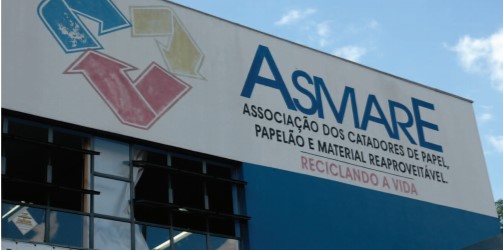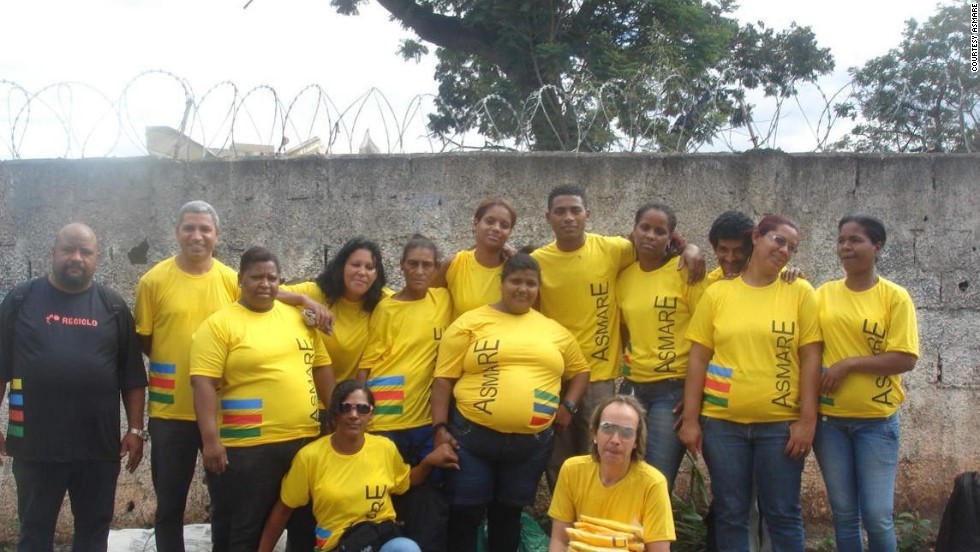Catadores Cooperatives in Belo Horizonte Challenge Dualisms in Planning
By Raviya Mysorewala
Introduction

Informal waste pickers play an important part in providing waste collection services in cities of the Global South. Not only do they serve households that municipal authorities neglect, but they also help reduce the burden on landfill sites by separating recyclable materials. In some cities their work covers between 50 to 100 percent of waste collection activities (Dias, 2011). According to an UN-Habitat report published in 2010, the recycling rate of informal waste pickers is higher than that of formal recycling systems in developing countries (Dias, 2011). Recognizing the importance of informal waste pickers, cities such as Bogota, Colombia, Pune, India, and Belo Horizonte, Brazil has implemented waste management systems that are inclusive of informal practices. In order to understand this inclusive planning practice and its implications, this case will analyze the waste collection system in Belo Horizonte, the third-largest city in Brazil.
In 1973, Belo Horizonte’s government shut down an open dump where informal workers used to collect saleable waste materials. The informal waste pickers, known as catadores, were also stigmatized as beggars and criminals. Since the city had no formal separation scheme for waste materials, catadores took to the streets to collect recyclables from the waste put out for city trucks. In 1990, catadores formed an association named Associação dos Catadores de Papel, Papelão e Material Reaproveitável (ASMARE) with the assistance of the NGO Pastoral de Rua, to fight for recognition of their right to earn a living (Dias, 2016).
In an attempt to improve its recycling and waste disposal system in 1993, the public sanitation agency of Belo Horizonte, Superintendência de Limpeza Urbana (SLU), partnered with catadores in consultation with ASMARE, providing them with the necessary infrastructure and facilities for waste collection, disposal, and recycling (Dias, 2016). This resulted in a waste collection system that integrated formal and informal sectors, bringing benefits, better pay, and improved working conditions to the informal workers.
Analysis

Many theorists have conceptualized the informal and formal sectors as binaries, where the former are characterized by practices that challenge what the state defines as ‘normal’ and which run contrary to the law (Kamete, 2013). This results in a “desire” (Kamete, 2013) for modernity and the imposition of state-driven approaches that marginalize the less privileged. Escobar (2012) argues that these dualisms universalize social constructions, placing people in categories, and measuring situations against Western standards. To overcome such top-down approaches, he calls for research into alternative representations and practices in concrete local settings, particularly as they exist in the context of hybridization and collective action. Similarly Watson argues that such collective action represents a fusion and hybridization of different identities (Watson, 2003).
The inclusion of cooperatives of catadores in municipal waste collection in Belo Horizonte is an example of a planning practice that is sensitive to the local context as called for by Watson (2009b). It provides new alternatives to modernist paradigms which introduced waste collection as solely a municipal service, depriving many waste pickers of their livelihoods (Dias, 2016). The informal system in this case is not considered a nuisance or an unorganized space that needs intervention and regulation. Rather it is recognized, made visible, and considered to be a system from which lessons can be derived. The informal workers are seen as key actors within the waste collection system rather than peripheral or nuisance actors.
This case also illustrates how urban processes should be viewed beyond vertical relationships; i.e. those at the top of the social, political, and economic hierarchies against those at the bottom (Roy, 2011). The catadores took to the streets to exercise their right to living but eventually partnered with the government. In addition to resistance there are also horizontal relationships that involve collaboration and negotiation.
These horizontalities also reveal inequalities within groups (Kabeer, 2015) and hence are crucial to understanding the limitations of this model. As Dias (2011) points out, the organized catadores represent only 15 percent of the informal waste pickers. While the unorganized catadores continue to collect recyclable waste, they are unable to benefit from better wages, political involvement, and training and other supporting infrastructure. Hence, the cooperatives can be considered an invited space (Miraftab, 2009) created by formal structures devised by NGOs and the municipality, implicitly sanctioning the practices of certain catadores over others. Therefore, Shresta and Aranya (2015) call for an analysis of power structures within heterogeneous groups of marginalized communities, as “it is crucial for insurgent planning practices to reach the most vulnerable citizens, who are usually excluded from receiving real benefit from movements” (Shresta and Aranya, 2015).
Implications

The Belo Horizonte waste collection model breaks conventional binaries between the formal and informal. The catadores initially resisted when the state shut down the open dump where the catadores worked, but the relationship eventually evolved into that of collaboration and negotiation. This case demonstrates that urban processes cannot be viewed solely through vertical relationships, where those from above impose regulations to support preferred governance practices while those on the bottom resist them.
However, this movement creates inequalities between catadores and can become a case of “structural cooptation” (De Souza, 2006). The state machinery subtly attempts to influence the cooperatives by appropriating their informal practices and incorporating them into formal, sanctioned state processes, thus depriving the cooperatives of their autonomy. While the catadores still have some control over the process and can innovate their terms of engagement, the exclusion of some catadores means that the system constitutes invited spaces rather than invented spaces. The movement has the potential to create more inclusion if it implements more radical strategies that focus on horizontal, non-hierarchal self-management (De Souza, 2006).
